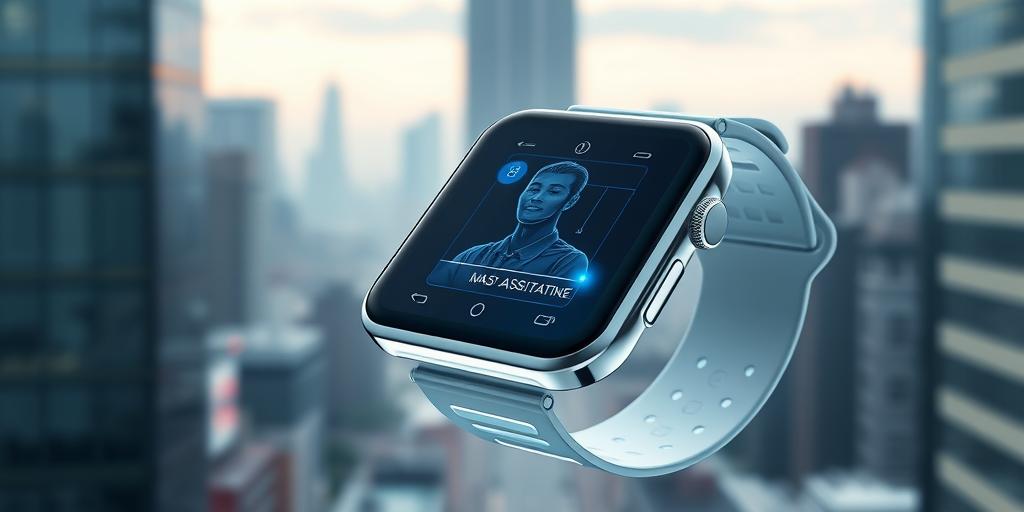The world of technology is constantly in flux, driven by the insatiable appetite for innovation and the ever-evolving needs of consumers. This relentless pursuit of progress has led to a remarkable evolution of gadgets, transforming them from mere tools into indispensable companions in our daily lives. Gadget evolution is a fascinating journey that reflects our changing lifestyles, priorities, and desires.
The Ever-Evolving Landscape of Gadgets
The landscape of gadgets is constantly shifting, shaped by a complex interplay of factors.
The Rise of Consumer Demand
Consumers are demanding more from their gadgets than ever before. They seek devices that are not only powerful and versatile but also personalized, intuitive, and seamlessly integrated into their lives. The rise of social media, mobile gaming, and streaming services has fueled this demand, pushing manufacturers to create devices that can handle increasingly complex tasks and deliver immersive experiences.
Technological Advancements Fueling Innovation
The rapid pace of technological advancement is the driving force behind the evolution of gadgets. Advances in processors, memory, display technologies, and battery life are constantly pushing the boundaries of what is possible. This progress has paved the way for smaller, more powerful, and more energy-efficient devices, enabling features that were once unimaginable.
Personalization and Customization: Tailoring Gadgets to Individual Needs
Gadgets are no longer one-size-fits-all solutions. Today’s consumers expect their devices to be tailored to their unique preferences and needs. This trend is driving the development of personalized experiences and customization options across various gadget categories.
Smart Home Integration and Automation
Smart home technology has revolutionized the way we interact with our homes. Connected devices, such as smart speakers, smart thermostats, and smart lighting systems, allow for seamless integration and automation, creating a more convenient and efficient living environment. These devices can be customized to suit individual preferences, from setting the ideal temperature to controlling lighting based on time of day.
Wearable Technology and Health Monitoring
Wearable technology has become increasingly popular, offering users a glimpse into their health and fitness data. Smartwatches, fitness trackers, and health monitoring devices provide real-time insights into sleep patterns, heart rate, activity levels, and more. These devices can be personalized with specific goals and tailored to individual needs, promoting healthier lifestyles.
Personalized Entertainment and Content Consumption
The way we consume entertainment and content has undergone a dramatic shift. Streaming services, mobile gaming platforms, and personalized recommendations have created a highly personalized experience, allowing users to tailor their entertainment to their preferences. Gadgets are evolving to meet these demands, offering high-resolution displays, immersive audio, and seamless integration with streaming services.
Connectivity and Seamless Integration: Bridging the Digital Divide
The interconnected world we live in demands seamless connectivity and integration across devices. This trend is driving the development of gadgets that can seamlessly communicate and share data, bridging the digital divide and creating a unified ecosystem.
The Internet of Things (IoT) and Connected Devices
The Internet of Things (IoT) is rapidly expanding, connecting everyday objects to the internet. Smart home devices, wearables, and even appliances are becoming part of the IoT, enabling them to communicate with each other and exchange data. This interconnectedness offers new possibilities for convenience, efficiency, and automation.
Cloud Computing and Data Storage
Cloud computing has revolutionized the way we store and access data. Cloud-based services allow users to store their data remotely, accessible from any device with an internet connection. This flexibility has enabled the development of devices with smaller storage capacities, relying on the cloud to store large amounts of data.
Cross-Platform Compatibility and Interoperability
The demand for seamless integration across different platforms has led to increased focus on cross-platform compatibility and interoperability. This means that gadgets from different manufacturers can communicate and work together, eliminating the need for users to be locked into specific ecosystems.
Sustainability and Ethical Considerations: Shaping the Future of Gadgets
As the demand for gadgets continues to grow, it is crucial to consider the environmental and ethical implications of their production and consumption. Sustainability and ethical considerations are playing an increasingly important role in shaping the future of gadgets.
Eco-Friendly Materials and Manufacturing Processes
The tech industry is increasingly prioritizing the use of eco-friendly materials and manufacturing processes. This involves sourcing materials responsibly, reducing waste, and minimizing the environmental impact of production. Manufacturers are exploring innovative solutions such as recycled materials, biodegradable packaging, and energy-efficient production methods.
Data Privacy and Security Concerns
As gadgets become more interconnected and collect more personal data, data privacy and security concerns are paramount. Manufacturers are implementing advanced security measures to protect user data and mitigate potential risks. Consumers are also becoming more aware of data privacy issues, demanding greater transparency and control over their personal information.
Responsible Consumption and Gadget Lifecycles
The rapid pace of technological innovation often leads to shorter gadget lifecycles, contributing to e-waste. Promoting responsible consumption and extending gadget lifecycles is crucial for environmental sustainability. Manufacturers are exploring ways to make devices more durable and repairable, encouraging users to upgrade rather than replace devices unnecessarily.
Looking Ahead: Emerging Trends and Future Innovations
The future of gadgets is filled with exciting possibilities, driven by emerging trends and technological advancements. Artificial intelligence (AI), augmented and virtual reality (AR/VR), and biotechnology are transforming the way we interact with technology.
Artificial Intelligence (AI) and Machine Learning
AI and machine learning are playing an increasingly important role in gadget development. AI-powered features are enhancing user experiences, providing personalized recommendations, and automating tasks. From voice assistants to image recognition software, AI is transforming the way we interact with our devices.
Augmented and Virtual Reality (AR/VR)
AR and VR technologies are blurring the lines between the physical and digital worlds. AR devices overlay digital information onto the real world, while VR devices create immersive experiences that transport users to virtual environments. These technologies have the potential to revolutionize entertainment, education, healthcare, and other industries.
Biotechnology and Human-Computer Interfaces
Biotechnology is opening up new possibilities for human-computer interfaces. Brain-computer interfaces, for example, allow users to control devices with their thoughts, creating a more intuitive and seamless interaction. This technology has the potential to revolutionize accessibility, gaming, and healthcare.
The Dynamic Relationship Between Gadgets and Consumer Demands
The evolution of gadgets is a dynamic process, driven by the ever-changing needs and desires of consumers. This relationship is symbiotic, with manufacturers constantly striving to meet consumer demands while simultaneously shaping those demands through innovation.
The Importance of Consumer Feedback and Market Research
Understanding consumer needs is crucial for manufacturers to develop successful gadgets. Market research, consumer feedback, and user testing play a vital role in shaping product development and ensuring that gadgets meet the expectations of their target audience.
The Role of Innovation and Technological Advancement
Innovation is the driving force behind the evolution of gadgets. Constant advancements in technology, materials, and manufacturing processes are pushing the boundaries of what is possible, creating new opportunities for user experiences and functionality.
The Future of Gadgets: A Symbiotic Relationship with Consumer Needs
The future of gadgets is likely to be shaped by a continued interplay between consumer demands and technological advancements. As technology continues to evolve and consumers’ needs become more sophisticated, gadgets will become even more powerful, personalized, and seamlessly integrated into our lives. The relationship between gadgets and consumer demands is a dynamic one, constantly evolving and shaping the future of technology.




